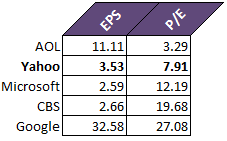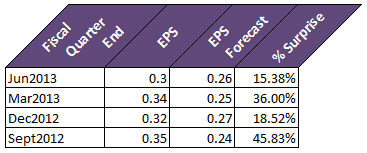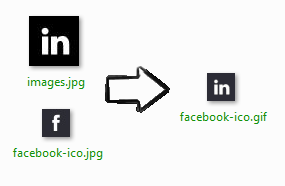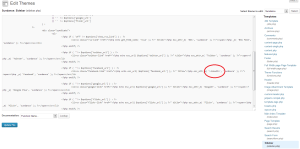*** UPDATE: Amtrak has changed their rewards program from a flat cost to a sliding scale, somewhat proportional to the dollar cost. The good news is, if you book in advance, you can find cheap points fares. See more here: https://www.amtrakguestrewards.com/ ***
If you ride Amtrak more than once per year, I promise you want to read this whole thing. However, the time you will spend clicking, waiting, and transferring points is considerable, so get ready to do a bit of work.

Amtrak’s Fare Pricing System
Let’s start with some basics, using regular economy-class travel from New York City to Baltimore as an example. The one-way cost between Baltimore and New York City will be around $50 when booked two or more weeks in advance. As is the norm in the travel industry, the cost increases as you approach the travel date. Booking that one-way fare on the same day you plan to travel will be anywhere from $107-$172 (or even more). Let’s take a closer look at Amtrak’s rewards program and their partner relationships to see how we can avoid paying so much (or anything at all) for that expensive fare.
Amtrak Guest Rewards Points
Amtrak points are better than gold to book fares. No matter when you make your reservation, the number of points required is the same. Our NYC to Baltimore economy seat costs 4000 points regardless of whether it is booked 4 weeks or 4 hours in advance. Therefore, 4000 points can be worth $50, and can also be worth $172. Points can be earned from riding the train, completing various promotions with Amtrak partners, purchasing points directly with cash, and transferred from other travel miles and credit card points programs. Clearly, there are plenty of ways to earn Amtrak points – we need to find the best ways to obtain lots of them.
Points from Riding: You earn 2 points per every $1 spent on Amtrak travel. When you ride business class or first class, you earn more points.
Points from Cash: You can buy 500 points from Amtrak for $13.75 (I assume they adjust this price every year or so with the rate of inflation). Since you need 4000 points to book a one-way trip in the Northeast, you’ll need to spend $110 to buy 4000 points outright. That’s a steep price to pay for most destinations, but it also brings up an important point – if you are looking at any Northeast fare more than $110, buy the 4000 points outright to book the ticket! Why pay $172 in cash for a seat that you can book using 4000 points purchased for $110?
Points from Promotions: Several simple marketing offers will earn you more Amtrak Guest Rewards Points. Most of these require that you spend money on something, such as a hotels, flights, or department store goods. Some don’t. One promotion for Metlife can be completed annually and earns you 500 Amtrak Points for simply calling to get a car insurance quote. The updated list of these promotions can be found on the Amtrak Guest Rewards website under “Earn.”
Points from Transfers: Many hotel, airline, car rental, and credit card loyalty programs will allow you to transfer points from one program to another. Based on some quick math, the transfer rate is very good between these programs. For example, transferring 4000 Chase Ultimate Rewards points – equal to $40 in cashback from Chase – to 4000 Amtrak Guest Rewards Points is an incredible advantage to Amtrak travelers. Remember, those Chase points can be used to book Amtrak fares worth hundreds of dollars after the conversion. Also, those points from Chase accrue from you using your card regularly at no cost to you, so after you transfer them to Amtrak, you’d be riding Amtrak for free!
Summary and Closing Notes
- For any Northeast fare that costs more than $110, buy 4000 Amtrak points for $110 and book the fare using those points.
- Many transfers, conversions, and redemptions with Amtrak points take 4-6 weeks to process, so be sure to allow adequate time for the points to show up in your account.
- In order to change a reservation made with points, you need to cancel the booking, and then re-book with the points again. There is no ‘modifying’ the reservations made with points.
- Amtrak Guest Rewards Program’s customer service is AWESOME. The service level is better in my humble opinion than that of many Fortune 500 companies. They are available 7 days a week from 5am-midnight Eastern Time (GMT+4/5): 1-800-307-5000.
This article was written in July 2014 and may not account for changes in Amtrak’s policies or Guest Rewards Program. Please feel free to ask any questions in the comments and I will try to answer as best I can.


 in the market, buybacks will drive earnings per share (EPS) higher and the price-to-earnings ratio (P/E) lower. A positive EPS and low P/E are both fundamental indicators of a healthy, profitable company. Yahoo’s relatively low P/E of 7.91 is not uncommon for similar companies [see graphic, right].
in the market, buybacks will drive earnings per share (EPS) higher and the price-to-earnings ratio (P/E) lower. A positive EPS and low P/E are both fundamental indicators of a healthy, profitable company. Yahoo’s relatively low P/E of 7.91 is not uncommon for similar companies [see graphic, right]. Further fundamental analysis suggests that Yahoo is still an attractive investment even after the stock has gained over 60% in the past year. The Beta of just 0.83 shows that the stock is less volatile than the rest of the market. A low beta is ideal for a long position in the stock, since the share price is less likely to have sweeping changes and fluctuations, potentially giving investors more time to contemplate a change in position. The PEG ratio average for Yahoo’s industry is 2.97%, while the entire S&P stands at 1.98%. The PEG ratio – the P/E divided by the expected growth rate – is 1.28% for Yahoo, showing that Yahoo is less expensive compared to the rest of the market. Quarterly earnings reports are a huge perception of performance and health, and Yahoo’s Q2 results continued the company’s earnings beat.
Further fundamental analysis suggests that Yahoo is still an attractive investment even after the stock has gained over 60% in the past year. The Beta of just 0.83 shows that the stock is less volatile than the rest of the market. A low beta is ideal for a long position in the stock, since the share price is less likely to have sweeping changes and fluctuations, potentially giving investors more time to contemplate a change in position. The PEG ratio average for Yahoo’s industry is 2.97%, while the entire S&P stands at 1.98%. The PEG ratio – the P/E divided by the expected growth rate – is 1.28% for Yahoo, showing that Yahoo is less expensive compared to the rest of the market. Quarterly earnings reports are a huge perception of performance and health, and Yahoo’s Q2 results continued the company’s earnings beat.


